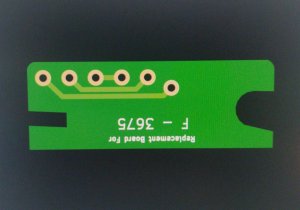Ok, so there are so many hall sensors of different types like bipolar, unipolar, linear, digital output, analogue output and about 6 other variable options, meaning there are literally hundreds of them.
I purchased a selection of the above options and next to last attempt I’ve found one that works!
If anyone ever has this issue, the replacement hall sensor is:
Honeywell SS495A.
It is a linear ratiometric sensor.
Thanks for all input in particular Norm’s invaluable guidance which I am very grateful for.
The tiny pcb is not designed for numerous messing with and troubleshooting, luckily my lad has recreated a replica which is currently being printed at a cost of £1.52 for 5.
